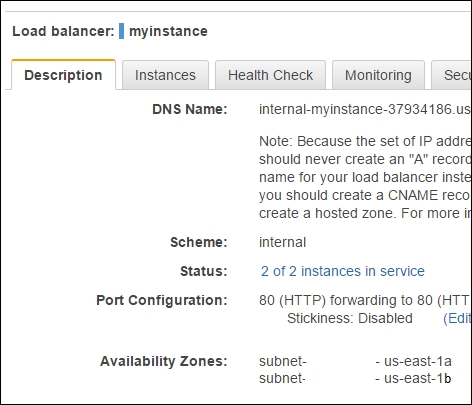Multi-data center pattern
The multi-server pattern guarantees resiliency at the server level, but can introduce an edge case. If the data center that the UI instances are in, goes under maintenance or has hardware failures that propagate upwards to the instances themselves, they might affect the end users, which is not acceptable. The UI instances cannot or should not be clustered, but should be present across different availability zones. This spanning across availability zones presents datacenter redundancy and is presented in the multi-data center pattern.
The steps for this pattern are nearly identical to the steps in the previous pattern except for two key differences. The first key difference is that the load balancer itself must cross multiple availability zones through subnets.

The other key difference is that the instances attached to the load balancer should be in different availability zones. Since the load balancer is in two zones, the instances should be in each zone as well...

































































